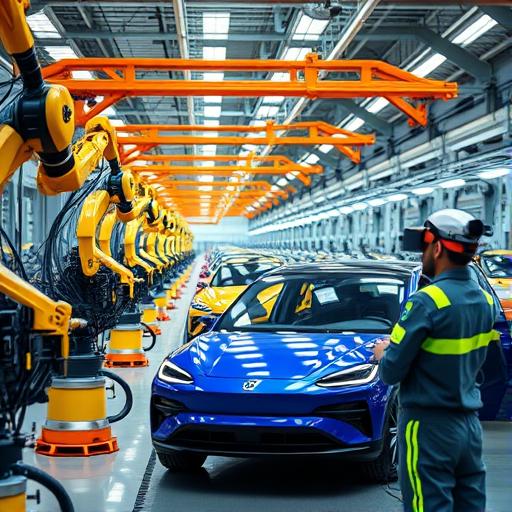Fashion with a Purpose: The Rise of Sustainable Fashion Designers

Fashion with a Purpose: The Rise of Sustainable Fashion Designers
Fashion with a Purpose: The Rise of Sustainable Fashion Designers
Understanding the Shift Towards Sustainability in Fashion
In recent years, the fashion industry has undergone a significant transformation fueled by the increasing awareness surrounding environmental sustainability. Historically regarded as one of the most polluting industries, fashion is now stepping up to the plate, striving for significant improvements. The shift towards sustainability encompasses not only the materials used but also the manufacturing processes, labor practices, and the overall longevity of clothing items. This movement has paved the way for a new breed of fashion designers dedicated to making a difference. These pioneering minds are not just focused on aesthetics but are committed to creating pieces that give back to the planet rather than take away from it. 🔥
Today, sustainable fashion designers are redefining modern trends with innovative approaches that challenge fast fashion's status quo. They emphasize the use of organic materials, the importance of ethical labor, and a mindful approach to consumption. This ethos branches out into various practices like upcycling and minimalistic designs that prioritize quality over quantity. Their work tells a narrative that resonates with conscious consumers, encouraging them to make informed choices about their wardrobes. The shift towards sustainability in the fashion industry is more than just a trend—it's a movement toward protecting our planet's future.
The Role of the Consumer in Sustainable Fashion
While sustainable fashion designers play a crucial role, the responsibility doesn't lie solely with them; consumers too hold significant power in influencing the market. With increased awareness of climate change, pollution, and social inequalities, the modern-day consumer is becoming more conscientious about their purchasing decisions. This shift is increasingly evident in the way customers seek transparency in brands' practices, and their readiness to support those who prioritize sustainability.
Consumers now have the ability to vote with their wallets, directing financial support toward brands that are committed to ethical practices and environmental stewardship. This change empowers sustainable fashion designers to innovate, experiment, and grow in a space that not only celebrates creativity but also promotes eco-friendly practices. Transparency in sourcing, supply chain ethics, and sustainable materials are now key areas of focus for discerning shoppers. As a result, designers are encouraged to adhere to higher standards, creating a ripple effect that nurtures the entire industry.
Moreover, the increasing demand for sustainable options leads to a healthier competition among brands. This is beneficial for the environment as it pushes fashion designers to continually seek out better sustainable practices. Shoppers today are also utilizing social media platforms to amplify voices that promote sustainable fashion, effectively creating a community that educates and inspires one another.
"In a world where you can be anything, be kind to the earth."
Showcasing Innovators in Sustainable Fashion Design
Within this exciting landscape of sustainable fashion, some designers stand out as innovators in their field, blazing trails toward new possibilities for sustainable production. Noteworthy names such as Stella McCartney, known for her commitment to cruelty-free fashion, and Reformation, which emphasizes chic styles while maintaining ethical practices, exemplify this revolution.

These designers are leading the charge, providing global visibility to the benefits of eco-conscious fashion, proving that sustainability can harmoniously intersect with high fashion. They create clothes using recycled fabrics, employ ethical labor practices, and focus on minimizing waste throughout the design process. Many also engage in initiatives that give back to the environment, planting trees or donating a portion of profits to meaningful causes.
Not limited to big names, newcomers are also emerging on the scene, armed with fresh perspectives. Designers from diverse backgrounds are experimenting with unconventional materials like recycled ocean plastics, organic dyes, and even renewable resources like hemp and bamboo. These trailblazers bring creativity to sustainability, pushing boundaries and inspiring future designers to adopt eco-friendly practices in their work.
Sustainable fashion events and competitions are emerging, encouraging young designers to consider their impact from the get-go. Conferences and workshops centered around sustainability provide platforms for collaboration and education within the industry. Through these efforts, a vibrant community dedicated to revolutionizing fashion emerges, rooted in the desire for a better future.
The Importance of the Circular Economy in Fashion
A critical component of sustainability in fashion is the circular economy. This model suggests that rather than consuming and discarding garments, we should shift towards a system that values the lifecycle of clothing. Sustainable fashion designers are adopting circular principles by creating garments that are designed for longevity, reparability, and recyclability.
Implementation of a circular economy not only reduces waste but also enhances resource efficiency. By encouraging the reuse and recycling of materials, designers contribute to minimizing the environmental impact of the industry. Brands are now offering take-back programs, where customers can return old clothing to be repaired, reconditioned, or repurposed into new products. This move allows fashion to step away from the linear model of "take-make-dispose" towards a more responsible approach.

On the consumer side, individuals are encouraged to participate in this paradigm shift through mindful consumption. Actions such as renting outfits for special occasions, thrifting, and organizing clothing swaps can prevent valuable resources from being wasted. When consumers adopt this mindset, it encourages broader industry changes, fostering a culture where sustainability is not just an option but a norm. In illustrating how clothes can have multiple lives, sustainable designers are enabling a more responsible approach to fashion consumption.
How to Embrace Sustainable Fashion
- Educate Yourself: Research sustainable brands and their practices.
- Invest in Quality: Buy fewer, higher-quality items that last longer.
- Consider Secondhand: Explore thrift shops or online resale platforms for unique finds.
- Participate: Join local clothing swaps or events that promote sustainable fashion.
- Advocate: Share information on sustainable fashion practices with friends and family.
Taking Action: What You Can Do Today
While the influence of sustainable fashion designers urges a collective mindset shift, individual action is equally crucial. As consumers, every purchase made has the power to influence the market. By supporting brands that align with ethical standards and sustainable practices, you help propel the change towards a more environmentally friendly industry. 💪
Start by assessing your own closet. Identify items that you can donate, recycle, or upcycle. Understand that you don’t need a massive wardrobe to express your style; a few versatile pieces can go a long way. Modify your shopping habits by prioritizing sustainable brands and becoming aware of the origins of your purchases. As previously outlined, education plays a pivotal role in making informed decisions. Attend workshops or read up about sustainable practices in fashion to broaden your understanding.
Moreover, take a vocal stand in your community. Create awareness around sustainable fashion within your circle through social media or community events. Encourage dialogues on ethical practices and share stories of brands that champion sustainability. The beauty of the movement lies in its ability to multiply; every action taken is a step towards broader awareness and change—a chain reaction that uplifts the entire community.
Every small action contributes to a larger collective effort, and as more individuals embrace the notion of sustainable fashion, the demand for sustainable practices will blossom further.
Conclusion
The burgeoning realm of sustainable fashion designers is a testament to the power of creativity and responsibility intertwined. It signifies a future where fashion can be synonymous with care for the environment and respect for the people involved in the industry. As we navigate through this transformative journey, it is essential to consciously contribute to the narrative that champions ethical practices and sustainability. We have the ability to become advocates for change, educating those around us while simplifying our own choices toward a more sustainable lifestyle. 🌟
The fabric of the future is woven not only from organic materials but also from shared knowledge, passion, and commitment. Let us embrace this movement, supporting sustainable fashion designers and making choices that reflect our values. Every step, big or small, matters. Together, we can inspire others and foster a movement that echoes the philosophy of sustainability—creating a better world for generations to come. Remember, as Gandhi said, “Be the change you wish to see in the world.” Make that change today through your fashion choices.
Join the Sustainable Fashion Movement! 🚀
Your choices matter. Start making a difference today!
Act Now!
